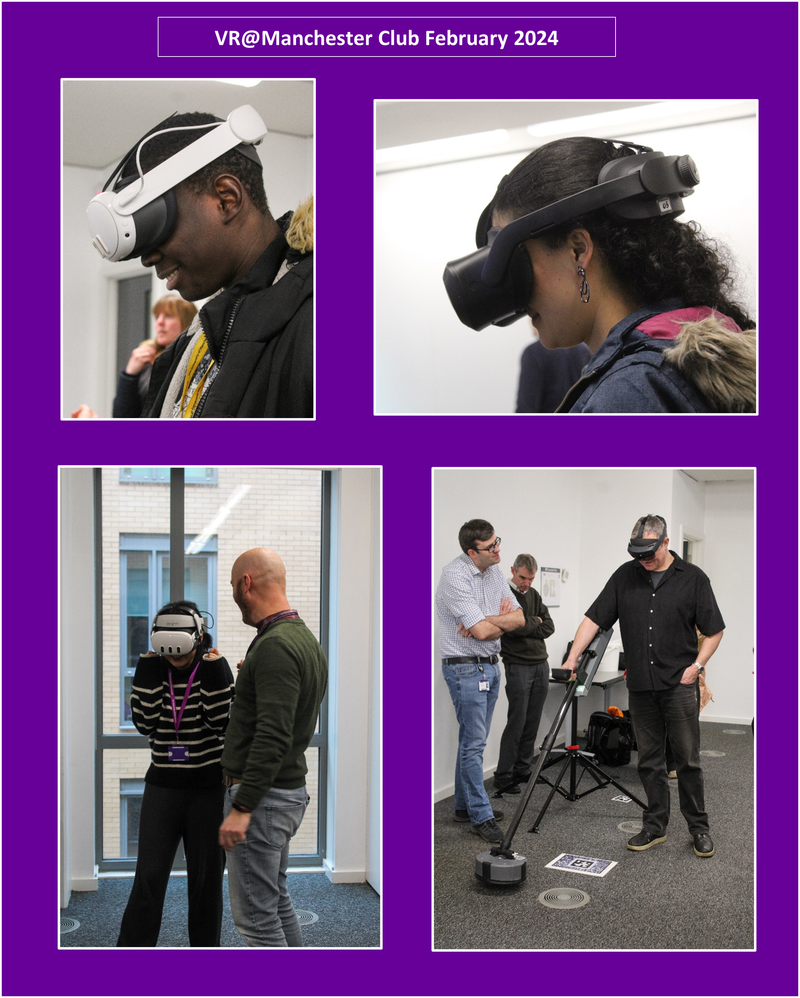Overview of Extended Reality at UoM
An overview of XR at UoM was provided by Dr. Tony Payton of the Division of Informatics, Imaging & Data Sciences, School of Health Sciences. He explained how XR capability has emerged in independent instances across the University’s Faculties and Schools; he believes that now is a great time for the centralisation of XR hardware and software co-ordination. Meanwhile, this peer group has formed and continues to spread practices and learning across the divisions. Dr. Payton underlined the increasing value of XR, citing study data indicating that most students believe VR improves their learning experience, and that the availability of VR influences students' decision to enroll.
XR Technology in Action
Five applications of XR from across the university were showcased, following the presentations the audience were given the opportunity to immerse themselves in the applications.
- Yat Leung on Digital Engineering for Fusion Energy.
Research IT and the Department of Computing Science have created a simulation that uses realistic renderings on large-scale CAD models of fusion energy concepts allowing engineers to collaborate remotely in a lifelike environment during the design process. This work was done as part of a project that involved researchers at the School of Engineering and external collaborators nTtau Digital Ltd, UK Atomic Energy Authority and the University of Oxford. - Prof. Tony Peyton on AR: potential industrial and mine clearance applications.
The Department of Electrical and Electronic Engineering are developing several practical applications of XR. Prof. Peyton described two examples, firstly the non-destructive inspection of industrial assets such as pipelines and secondly the creation of 3D ground maps that combine data from radar and metal detection scans to improve the accuracy and safety of land mine detection. - Dr Paul Warren on VR2 activities.
The Division of Neuroscience & Experimental Psychology have established a Virtual Reality Research facility, called VR2 the purpose of the Facility is to research human cognitive systems using virtual reality and motion tracking technologies. Dr. Warren explained the department's two current focus areas: first, investigations into perception, actions, and decision-making in both health and disorder, the findings of which are used to inform approaches to therapy, intervention, and support. Second, to research how human perceptual science may improve future XR applications. Dr. Warren presented an entertaining example of how a Squid Game-like simulation was created to investigate how the Gambler's fallacy is influenced by the visceral effect of dying in virtual reality! - Dr John Piprani on 3D Scanning.
The School of Arts, Languages and Cultures has created 3D virtual tours of cultural institutions at the University, local museums, galleries, and other cultural and heritage sites. Dr Piprani described how the technology is being used to make sites more accessible, to curate the temporary and to decolonise collections. Find 12 virtual tours here. - Dr Jonny Abbas on developing a tracheostomy simulation.
The Manchester University NHS Foundation Trust are developing a simulation of Emergency Paediatric Tracheostomy Management.
Find the supporting slide decks on the VR@Manchester channel in CaDiR.
For those interested in the latest trends and developments in XR at Manchester please join the VR@Manchester Club on CaDiR. Our events provide opportunities to network with your peers, to discover cutting-edge innovations, and explore the exciting world of extended reality. We look forward to meeting you soon.
Finally remember that, while VR community events are fun; our objective is to advance the way we study, experiment with, and enhance the world around us


